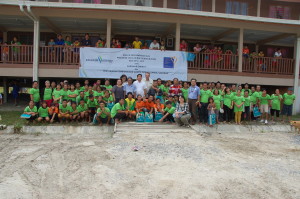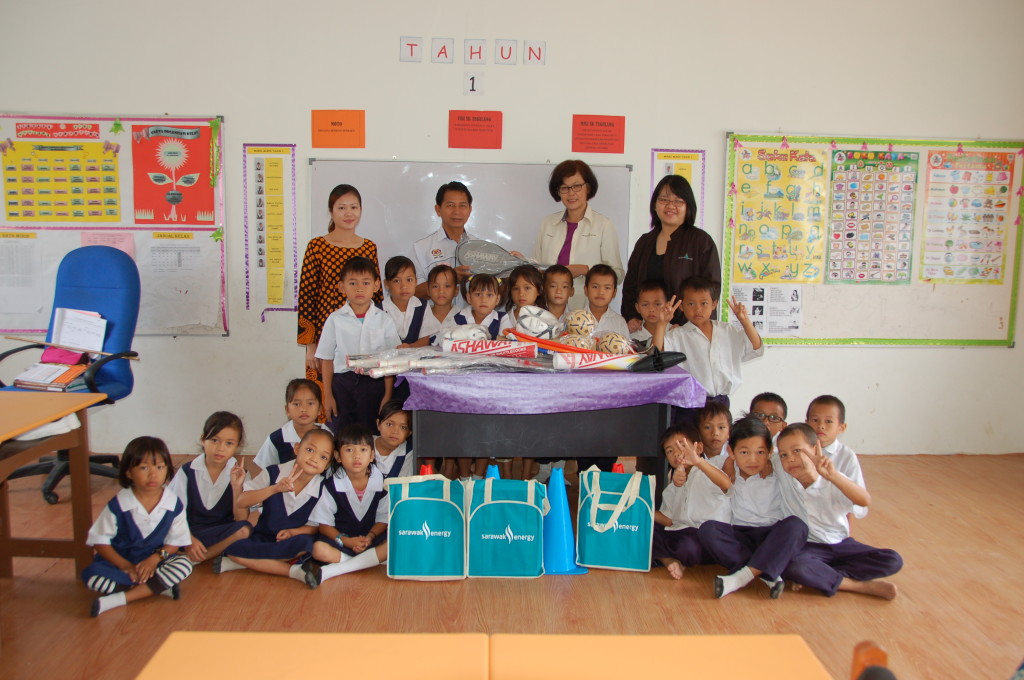Corporations near and far believe that giving back to the community is an important portion of a company’s responsibility as it does business.
Aside from achieving KPIs, generating profits and delivering dividends, companies believe it is utmost important to engage with the local community and provide assistance when needed.
This is especially the case if the company’s business activities affect the local community at large, at which point these entities will then take it upon themselves to come up with sustainable and viable solutions as part of their corporate social responsibility (CSR) to resolve such problems.
One such player is power giant Sarawak Energy Bhd (Sarawak Energy) in Malaysia, which provides the Sarawak state with the power it needs.
According to social investment manager for corporate social responsibility, Joanne Tan, every company defines CSR in a different way. In Sarawak Energy’s case, the group manages its business with the aim of minimising negative impact to both environment and community.
“We know that in any operation, there are bound to be some negative impact but we must know how to mitigate and reduce the negative impact and maximise the positive impact such as how much you can do for the communities,” Tan told BizHive Weekly in an interview recently.
Being the sole provider of electricity to the state of Sarawak, the group acknowledges and respects all its customers and the communities present here.
“This is why the CSR was set up in 2011, to contribute to the well-being of the community.
“We believe in working with the community especially in the areas and regions where we operate our business,” she added.
When it comes to environmental impact, all eyes are on Sarawak Energy.
To note, the group has many CSR activities to ensure the communities affected by the Murum Hydropower Electric Project (HEP) can smoothly adapt to their new life in new resettlement areas.
One such example is its partnership with the Society for the Advancement of Women and the Family Sarawak (SAWF) to create the Murum Penan Literacy Programme.
The Murum HEP, which affected six Penan and one Kenyah longhouses, led to the relocation of the families at Tegulang and Metalun.
According to Sarawak Energy’s Tan, literacy rate in Murum had been very low prior to the programme, at less than 10 per cent.
A ‘Contemporary Ethnography’ survey conducted by the state government’s consultants in 2009 had identified that out of 550 education-aged Penans in six villages of Murum, 517 were not attending school. The Murum Penan Literacy Programme was thus created to close this gap.
“We feel that being literate is very important. Before you can introduce anything to them, I think being literate is the most fundamental requirement,” Tan said.
Working closely with the SAWF, the programme caters for all interested participants in the six affected communities. Literacy classes were set up in seven Penan longhouses, with six in Murum and one in Sungai Asap.
Sarawak Energy and SAWF initially focused on Penan women for the literacy programme because they felt that women needed the skills more, in addition to being at home more often as they were always taking care of kids while the men went to the farm or went hunting.
However, at the start of the literacy programme at Sungai Asap, Sarawak Energy and SAWF noticed that the Penan men actually came out and supported the women for joining this programme.
With such support and interest from everyone in the programme, the partners thus altered the program to cater for all interested participants in Murum.
While the programme was supposed to last for a year, Sarawak Energy felt that because the participants needed a longer time to learn, compared to other indigenous rural communities, it thus extended the duration of the programme.
“As long as they have that type of learning behaviour, we are quite grateful,” Tan said.
As part of the Murum Penan Literacy Programme, they started training some of the Penans who have been to school but dropped out mid-way, to be facilitators. These included those who studied up to either Primary Six or until Form Three or Five.
Following the training course by Sarawak Energy, these facilitators then went back to their longhouses and set up the classes to start teaching interested students.
 As a facilitator, they teach 10 to 20 of their students three times a week. In addition, these facilitators are paid RM5 for each two-hour session. Teaching materials and books for the students have also been provided.
As a facilitator, they teach 10 to 20 of their students three times a week. In addition, these facilitators are paid RM5 for each two-hour session. Teaching materials and books for the students have also been provided.
Tan explained that the literacy programme is not like the education that is typically received in school because the Penans already know how to speak fluent Bahasa Melayu. The only thing was that back then, they did not recognise or read words.
After having participated in this literacy programme, she said that they know how to read and recognise words such as ‘Sarawak’.
This is particularly useful especially since previously, when the Penans went to the clinic and doctors gave prescriptions, they could not even recognise the figures for the dosages. As such, all this basic literacy has become very useful for the participants.
The following year 2013 saw the introduction of stage two of Sarawak Energy’s partnership with SAWF which aimed to ensure continuous learning and developoment of the community.
The second stage of the literacy programme also aims to complement the livelihood restoration in the Resettlement Action Plan and at the same time, to promote economic empowerment of the community so that they are able to grow their own food for enhanced food security and earn extra income from farming or employed jobs to enable livelihood sustainability.
Stage two saw participants learning about personal development, health and hygiene. The first module of personal development consisted of five topics – motivation, vision, values, communication and change. The second module involved teaching the participants that good health begins at home and that maintaining their hygiene is important.
Family welfare of the women in contributing to their families and community development were also covered in stage two.
Last year, 341 Penans completed stage two of the literacy programme based on an assessment conducted by SAWF. The graduates were issued a certificate of participation for their attendance and assessment which deemed that they were able to do basic reading, writing and calculations with confidence.
Tan noted that Sarawak Energy initially thought that teaching them how to read, write, do some basic calculations and recognise figures would be good enough. However, the group felt that it could not just leave them as they were just starting and felt that it still has to continuously be with them and educate them in other areas of livelihood sustainability.
This led to stage three which focuses on ensuring continuous learning and developoment of the community. The third stage covered home economics on the skill of saving, spending and attitude towards money for youths, parents and especially women.
More specifically, participants were given training on basic mathematics, good personal finance, basic accounting and starting up an organisation.
For stage three, youths and parents will also be attending parenting workshops.
While the literacy programme is now in its fourth year, Tan acknowledged that they cannot be there forever guiding the Penans in their livelihood. She believes that after the program, they should be self-sustainable.
That said, Sarawak Energy is going into other programmes such as handicraft development and perhaps in the future, they may even go into IT programmes.
In line with their belief that education is important for the younger generation, Sarawak Energy’s other initiative was the construction of two primary schools SK Tegulang and SK Metalun situated in the Murum resettlement areas.
Sarawak Energy is also providing transportation for the students whereby it pays the local villagers who have transport to bring the youngsters to and from school. The Penans have been asked by the group to handle this and are paid on a monthly basis.
Overall, the group sees the improvement in literacy rate and school attendance now because the school is nearer and it has provided transportation and seen to their needs.
The Penans have more confidence in interaction, speak very well and are positive in attitude. In addition, she noted that there has been increasing entrepreneurship amongst them whereby they are always encouraging visitors to buy their handicrafts and other products.
“They are encouraged and we feel there is motivation there,” she said.
The case study was taken from here.

